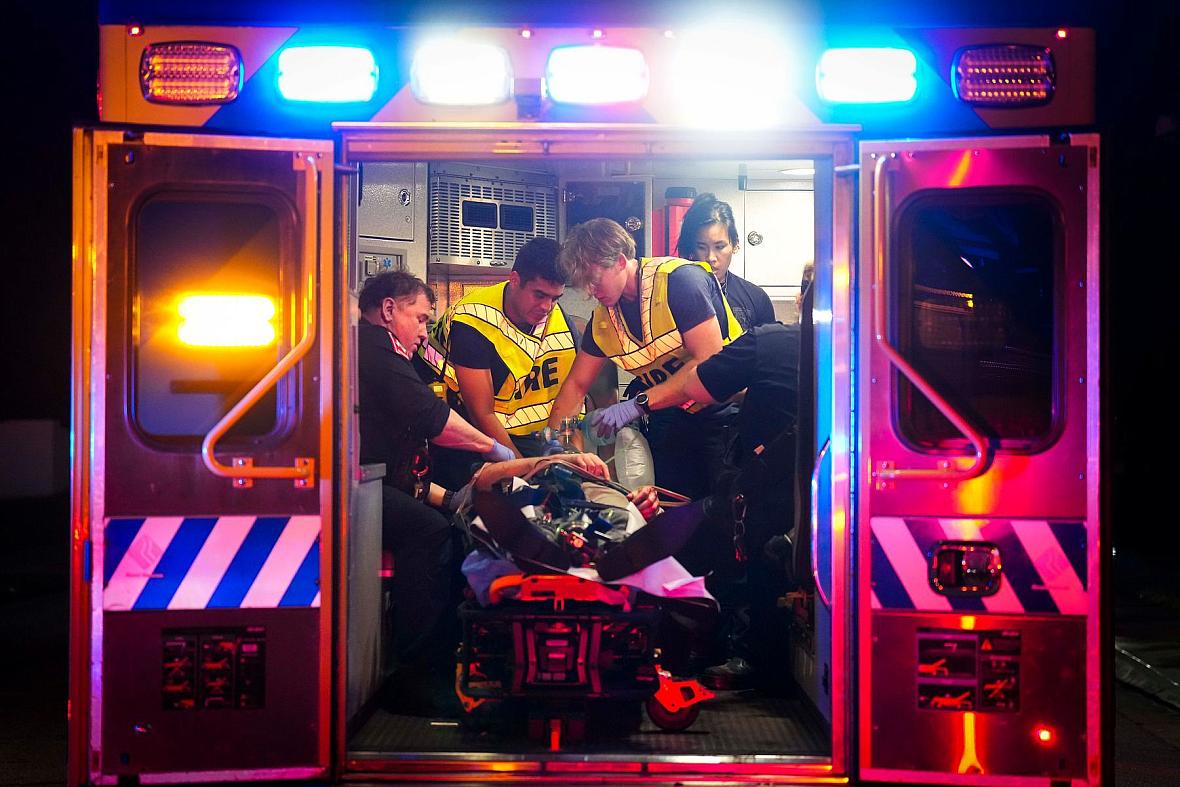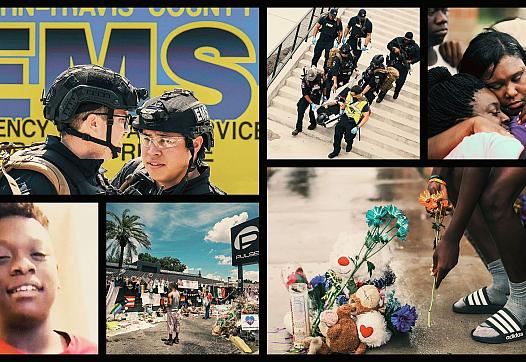8 highlights from our investigation on trauma care in the U.S. health system
The story was originally published by the The Dallas Morning News with support from our 2022 National Fellowship.

Austin-Travis County EMS Commander Craig Smith (left) works in the back of an ambulance in May.
Smiley N. Pool / Staff Photographer
For more than two years, The Dallas Morning News and the Antonio Express-News investigated why so many Americans bleed to death from traumatic injuries they could have survived after shootings, car wrecks, falls and other accidents.
Here are eight things you need to know:
TRAUMA IS DEADLY.
Traumatic injuries kill more children and adults under age 45 than any other cause, ending more lives prematurely than either cancer or heart disease.
In 2020, trauma claimed the life of an American about every 3½ minutes, a Texan every 42 minutes and a Dallas County resident every 7½ hours, federal data shows.
MANY TRAUMA DEATHS COULD BE PREVENTED.
Medical researchers who studied autopsies of trauma victims found that as many as 1 in 3 could have survived with faster access to treatment.
One study of more than 1,800 trauma deaths in 2014 in Harris County, which includes Houston, found that 36% of deaths involved potentially survivable wounds.
Another study of the 2016 Pulse nightclub shooting in Orlando, Fla., found 16 of the 49 victims could have possibly survived their wounds.
BLOOD LOSS IS A HEALTH CRISIS.
In most potentially preventable trauma deaths, patients bled out before their injuries could be treated. Leading medical experts call it a public health crisis.
Researchers estimate that, each year, 31,000 patients across the country die of potentially preventable bleeding after an injury. That’s the number of fans that would fill American Airlines Center during a Dallas Mavericks game 1½ times over.
PARAMEDICS ARE UNEQUIPPED TO FULLY TREAT MAJOR BLOOD LOSS.
Most paramedics do not carry blood, even though it’s one of the few tools available to treat severe internal bleeding before a patient can undergo surgery.
Of the more than 23,000 organizations nationwide that provide emergency medical services, only about 100 ground ambulance providers carry blood products, trauma advocates found. While most air ambulance companies have blood onboard, they treat a small fraction of injured patients.
Most EMS providers do not carry blood because it’s costly and supply is limited. They also face regulatory and logistical barriers, like maintaining the temperature of refrigerated blood in the field and using it before it expires.
BLOOD TRANSFUSIONS OFTEN COME TOO LATE.
An analysis of emergency medical data for more than 3 million U.S. patients treated in 2019 found less than 1% received blood on the way to the hospital, even when they showed clear signs of bleeding out. Another study of data from that same year estimated that 50,000 to 300,000 patients annually across the country could benefit from access to blood on ambulances and helicopters.
This delay is crucial for the most severely injured patients, whose risk of death rises with each minute they do not receive transfusions or other lifesaving interventions. Deaths from severe blood loss peak around the half-hour mark, claiming patients on the way to the hospital or soon after they arrive.
U.S. TRAUMA CARE IS INEQUITABLE.
Across the country, where you live can determine whether you survive a major injury. Nationwide, patients have unequal access to emergency medical services and trauma hospitals equipped to treat the most severe injuries.
In the West and parts of the South, where there are extensive trauma care deserts, injured patients are more likely to die before reaching a hospital than on the East Coast, where trauma centers are more accessible.
BLOOD PROGRAMS CAN SAVE LIVES.
In a growing number of cities, paramedics carry blood — something military medics have done for years because it can save lives.
In San Antonio and South Texas, more than 2,100 patients have received blood transfusions on the way to a hospital since 2018 as part of an innovative collaboration among the region’s health leaders. Blood programs have also been established in Austin, New Orleans, Seattle, Oklahoma City, Pittsburgh and South Florida.
Early data from the programs in South Texas and New Orleans have linked rapid access to blood to improved survival rates.
PREHOSPITAL BLOOD REMAINS LARGELY UNAVAILABLE.
While blood is widely available on ambulances in San Antonio, Austin and other parts of Texas, that’s not the case for most patients in the Dallas-Fort Worth area. Other than air medical providers, just three suburban ambulance services in North Texas carry blood products, with a fourth expected soon.
Neither Dallas Fire-Rescue nor MedStar Mobile Healthcare, which provides ambulance service to Fort Worth and its surrounding communities, carry blood products. Dallas Fire-Rescue officials said they intend to launch a pilot blood program early next year in response to repeated questions from The News. A handful of other North Texas EMS providers expect to start carrying blood products in 2024 as part of a regional pilot program.

